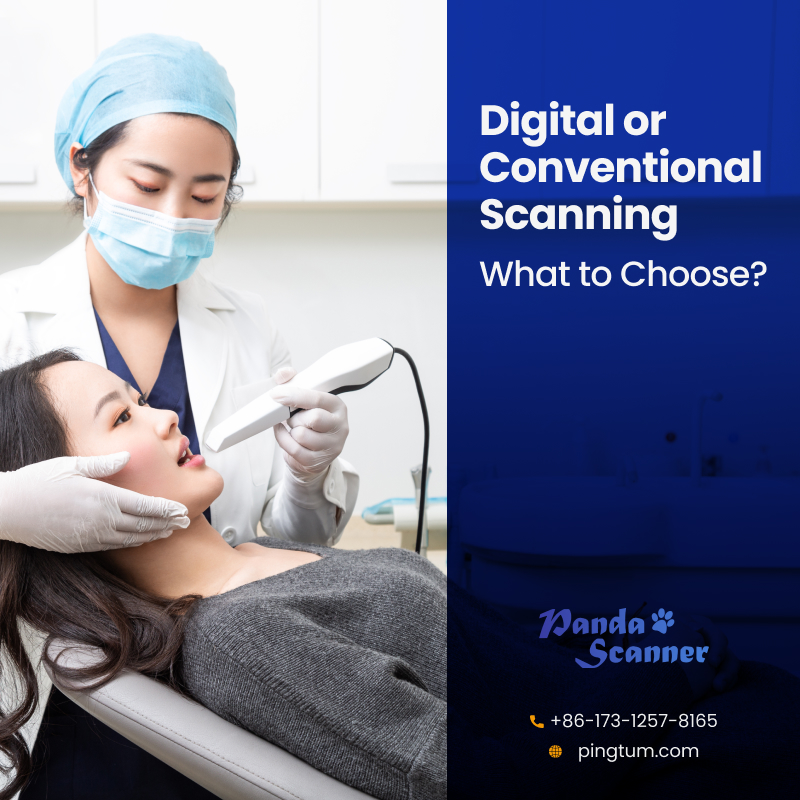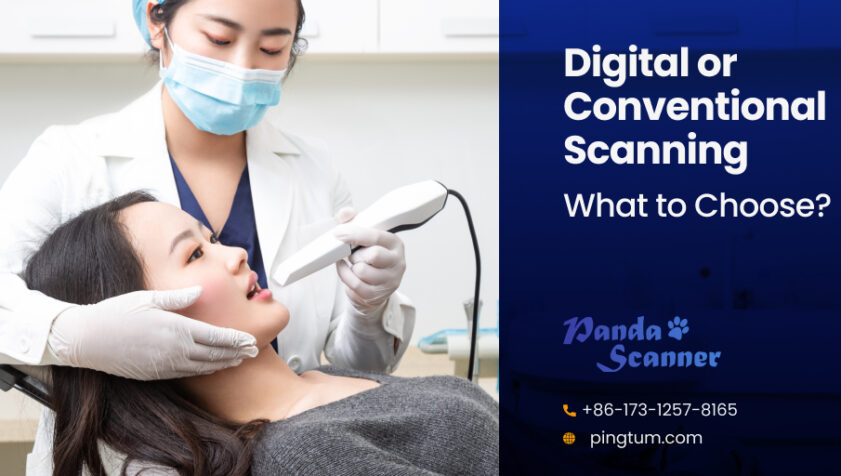When it comes to the dental world today, the impact of technology is quite clear. New devices and techniques are being developed, and they are being used by many dentists. Among the various technologies, some of those that have gained popularity are digital impression systems, CAD, CAM, tele dentistry, and others. In this blog, we will take a look at how digital impression system devices, which are performed with the help of digital scanning, are better than the conventional scanning system. Although many dentists are aware of the benefits of the former, they are still not sure how it is superior to the conventional scanning system. If you are a dentist and want to know about this, then read this blog to evaluate both systems and help you understand which one is most suitable and convenient for you.
So, let’s quickly delve further and take a look at the two scanning methods.

Conventional or Traditional Scanning Method
When it comes to the traditional scanning method, a complicated procedure is involved. Not only is the process lengthy, but it can also put the patients at risk as they are required to hold unpleasant materials like the alginate materials in their mouths to give the impressions. This is how dentists obtain an impression of the oral cavity. Even though the process does not use needles, the gummy materials can cause choking and gagging. Plus, patients who suffer from strong gag reflexes such as TMJ can find the process extremely painful and uncomfortable. Further, the dentists can easily commit a mistake while obtaining the impression, and that would mean multiple sittings for the patients. So, it is a time-consuming, ineffective, and inconvenient method of scanning.
Digital Scanning Method
The digital scanning method, on the other hand, utilizes intraoral scanners to procure the impression of the buccal cavity of the patients. And it eliminates the requirement for the wax-up model that was used in the traditional scanning method. Here, the dentists use scanners to capture the impressions of the patient’s buccal cavity, and then the software fabricates a virtual 3D digital model of the dental impression. Here, the procedure is non-invasive, and the patients sit and relax during the entire session. They can also observe the entire treatment through the side monitor. Since the treatment uses no gummy material, the risk factor also becomes zero. After the impressions are captured, the dentist sends the impressions to the laboratory via email, which is a great upgrade over the previous model, where the dentists had to manually handle the impressions and transmit them to the laboratory. And that means there is no risk of distortion. To help you understand how the digital impression system is more convenient, here are some points that you can take a look at.
Take a look to learn why a digital impression system should be preferred over its traditional counterpart.
- With the help of intraoral scanners such as Panda scanners, dentists can capture every nook and cranny of the patient’s oral cavity; this was not possible with the help of conventional scanning methods.
- minimises the time required for scanning
- The alginate materials used can cause gagging and choking in patients, and since this method does not use such materials, it is safe for the patients.
- The patients can easily relax when the dentists obtain the scan in the digital impression system.
- The errors are minimised.
- Patients can engage with the treatment process by checking it out on a real-time basis on the side monitor.
- The virtual storage option allows for freeing up space; on the other hand, the traditional method stores the impression materials. Thus, the cost is also reduced.
- The digital impression system has eliminated the need for the disposal tray, which may trigger pollution as it ends up in landfills.
Conclusion
As you can see, a digital impression system offers many benefits that a conventional impression system is incapable of, so you know what would be the better option for your practise. Like many other dentists, if you are anxious because it works differently and you have to learn the method, you need to understand that with time you can easily get a grip on it. The scanners with which the scanning is done are designed to be user-friendly, so you don’t have to worry about them. Now, if you have not invested in an intraoral scanner, such as a Panda scanner, yet, know that you can lag behind your competitors.






